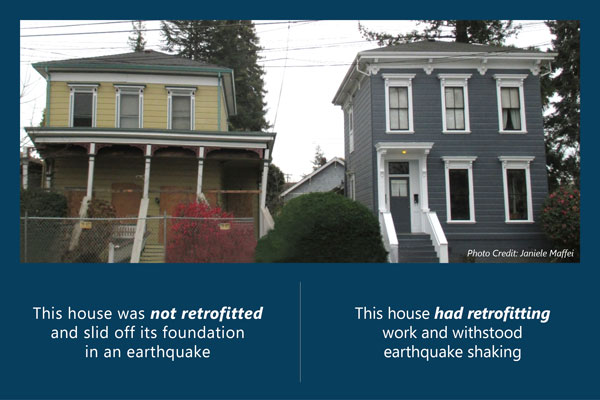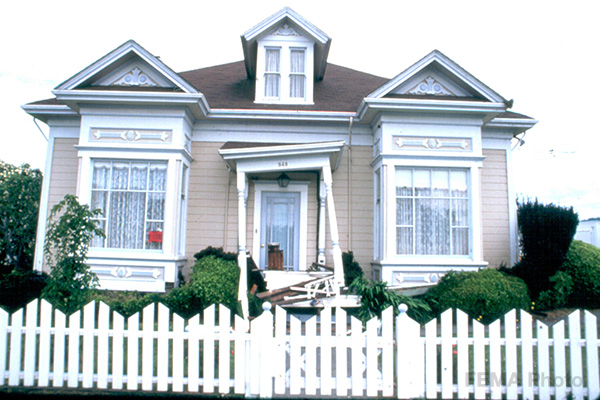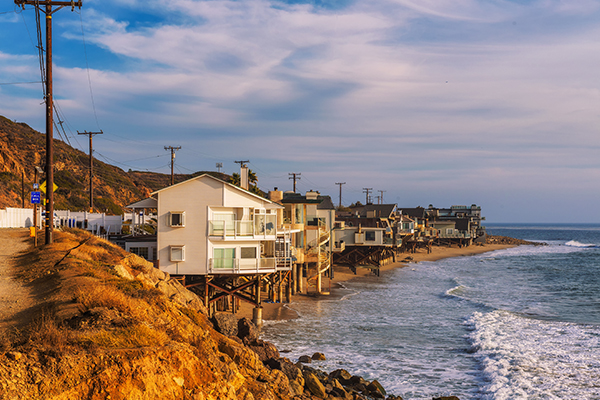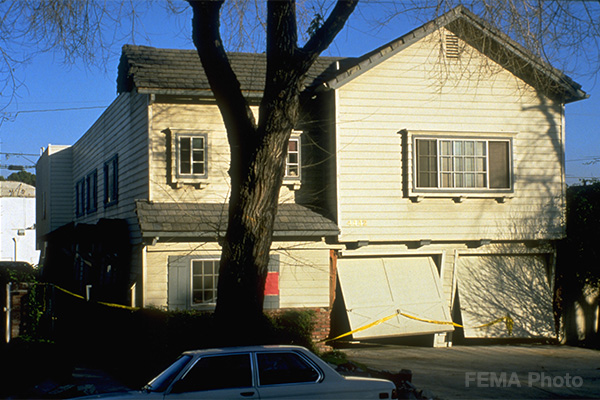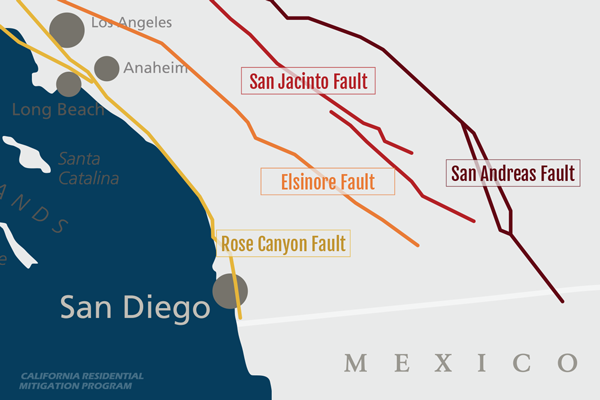Is it worth earthquake retrofitting a home in San Diego?
Should you be considering a seismic retrofit in San Diego? The region’s large population coupled with the poor seismic resistance of its older homes and other structures, makes the area vulnerable to earthquakes.
An earthquake retrofit in San Diego involves strengthening the structure to make it more resistant to earthquake shaking and damage. In many cases, the retrofitting process itself strengthens an older home by bolting the house to its foundation with anchor bolts, or with bracing and bolting. There are more than one million of these types of vulnerable older homes in high hazard earthquake areas across California, and many of those homes are in and around San Diego, that could benefit from this type of foundation repair. Many of these older homes were built before modern building codes were in place.
A recent study by the Pacific Earthquake Engineering Research (PEER) Center estimates that the owners of retrofitted houses can save between $10,000 and $200,000 in repair costs resulting from a major earthquake by bolting or bracing and bolting their homes with a seismic retrofit.
This research helps to demonstrate that seismic retrofits are cost effective, and that retrofitting is worth it when you compare the potential cost of repairing a damaged home. Thorough research and analysis suggests that spending a smaller amount of money to help reduce damage and help give your house earthquake resistance is more beneficial than facing a much larger repair bill after an earthquake.
What are the benefits of getting a seismic retrofit in San Diego?
Strengthening your house with a seismic retrofit in San Diego is a good way to lessen the potential for costly earthquake damage, saving you what could be tens to hundreds of thousands of dollars in repair costs. It can help provide peace of mind, knowing that you have helped your family better withstand an earthquake by strengthening your home.
These two side-by-side houses, shown after the magnitude 6.0 2014 American Canyon (South Napa) earthquake, illustrate the benefit of a seismic retrofit—as one had been strengthened and one had not.
How much does a San Diego retrofit cost?
If you are curious about the seismic retrofit cost in San Diego, the range to retrofit a home on a raised foundation is usually between $3,000 and $7,000. The average cost of a brace and bolt retrofit in Southern California is $4,700 with the cost of a bolt-only retrofit being typically less. Older houses with steps up to the first floor are on a raised foundation. This means they have an area underneath the first floor, which is referred to as a crawl space. These types of houses can shift off their foundations from shaking. They often can be strengthened by bolting the house to its foundation.
Larger homes, those built on hillsides and those with basements and rooms over garages will typically cost more to retrofit.
Importantly, homeowners can remain inside their dwelling as, in most cases, workers are able to do the retrofitting work without entering the residence. Compared to the potential cost of repairing an earthquake damaged home, spending a smaller amount of money to help prevent damage can help avoid a much bigger repair bill after an earthquake.
Are there any financial incentives available to those who seismically retrofit their older homes in San Diego?
California Earthquake Authority (CEA) insurance premium discounts of up to 25 percent are available on properly retrofitted homes. An earthquake retrofit in San Diego provides safety and piece of mind for homeowners and the CEA premium discount for properly retrofitted homes helps make it worth the cost of paying out of pocket for a retrofit.
There may be other financial assistance options available to you. Learn more about options you may have, which could include financial help through government assistance or a loan from your bank.
Other Financial Assistance Options for a Seismic Retrofit
How to get San Diego retrofit
With respect to San Diego earthquake retrofit requirements, once you have identified your house type and its vulnerabilities and you determine the type of retrofit that is needed, it is time for you to make a plan to carry out the retrofit. This includes hiring a contractor (or considering doing the work yourself), deciding how you will pay for the retrofit, and scheduling out the timeline for completion.
Seismic retrofit contractors in San Diego
It makes the most sense to get bids from several contractors before you make your final selection. The California State License Board (CSLB) also recommends obtaining more than one bid and makes available a list of seismic retrofit contractors in San Diego.
You can check out the list of contractors, who have received training and are experienced on how to do a brace and bolt seismic retrofit in San Diego.
If your home requires an engineered retrofit, you or your contractor will need to hire a licensed structural or civil engineer to advise on your retrofit efforts. Our Licensed Design Professional Directory can help you with your search.
What are the structural risks for each type of foundation during an earthquake?
Because of the San Diego area’s housing diversity in the way its homes are built, these different types of homes described below pose their own risks and may require their own type of retrofitting to strengthen their ability to withstand the devastating force of a major earthquake. But you don’t need a degree in structural engineering to understand the different house types! Below, we outline the various house types and how to minimize their risk of earthquake damage.
Raised Foundation
A house with a raised foundation has an area underneath the first floor, which is referred to as a crawl space. Industry professionals use the term “cripple wall” to define crawl space walls. These older homes with steps up to the first floor can shift off their foundations from shaking. They can be strengthened by bolting or bracing and bolting the house to its foundation.
Here is an example of a house with this type of foundation. This house slid off its foundation and was red tagged after the Northridge earthquake. You can find more information on this risk at the Raised Foundation House Retrofit page.
Post and Pier House
A post and pier house is a type of raised foundation home, in that there is an area created underneath the dwelling floor.
Here is an example of this type of house—you can find more information on this risk and what you can do to minimize it at the Post & Pier House Retrofit page.
Hillside House
These houses have certain, inherent structural elements that can make them vulnerable when earthquakes occur. They are houses built on hillsides or sleep slopes and often are set on tall, narrow posts or columns, with or without diagonal bracing.
Hillside houses can be at risk in strong shaking and may need to be strengthened by being properly retrofitted to withstand earthquakes.
Here is an example of a house with this type of risk—you can find more information at the Hillside House Retrofit page.
Houses with a Living Space Over a Garage
Houses with one or more floors of living space over an attached garage are vulnerable to shaking. Their vulnerability to earthquakes comes from a living space being atop the garage beneath, which lacks structural soundness. The garage area of these homes also may have walls and doors that are not braced to resist earthquake motion. Retrofitting the garage space can make these homes more resistant to earthquake damage.
Here is an example of a house with this type of foundation that was red tagged after the 1994 Northridge earthquake—you can find more information on this risk on the Living Space Over Garage House Retrofit page.
What is risk of an earthquake in San Diego?
In their most recent report, the United States Geological Survey (USGS) predicted a 99 percent chance of a magnitude 6.7 or greater earthquakes striking anywhere in California in the next 30 years, based on a 30-year period, beginning in 2014.* In the larger Southern California area, there is 75% probability of one or more magnitude 7.0 or greater earthquakes striking. In the Greater San Diego area, the Rose Canyon Fault runs through the heart of the city and along the Pacific Ocean, presenting a major seismic hazard to the region.
A San Diego Earthquake Planning Scenario by the Earthquake Engineering Research Institute studied the magnitude of a 6.9 scenario earthquake on the Rose Canyon Fault Zone to raise awareness and prompt action towards reducing seismic risk in San Diego. Among the scenario findings are that 36,000 households would be displaced, 8,000 buildings would be damaged beyond repair and that the region would suffer $38 billion in building and infrastructure damages.
The Elsinore and San Jacinto faults, which cut through East County, can also generate moderately-sized but damaging earthquakes.
And of course there is the infamous San Andreas network of faults, which can cause powerful earthquakes, as big as a magnitude 8, and could generate strong shaking in San Diego.
The last major damaging earthquake to strike in the Golden State was about 100 miles north of San Diego in Southern California’s San Fernando Valley. While quite a distance away, the powerful Northridge quake was felt in the San Diego area. Many of the residential structures that sustained severe damage during the Northridge earthquake occurred because of their inherent vulnerabilities, such as unreinforced chimneys, houses not being braced and bolted to their foundations, and soft story (garage) structures.
How to protect your home
While it is impossible to accurately predict when an earthquake will occur, you can still take measures to reduce damage and improve the chances of staying safe by preparing in advance for earthquakes. The ways in which you can protect your home and your family in the event of a major earthquake (in addition to finding out if your home needs a seismic retrofit in San Diego) include:
- Create an earthquake safety plan for you and loved ones, including pets.
- Know your risk for earthquakes in your area and what you must do to stay safe.
- Make or purchase earthquake safety kits.
- Identify and fix potential earthquake hazards in your home.
- Secure fixtures, furniture, appliances and other items inside your home.
- Visit the Seven Essential Earthquake Safety Tips page for more safety, protection and emergency preparedness tips.
Determine your structural risks
If you live in the San Diego area and your raised foundation older house was built before 1980, earthquake experts say your dwelling is especially vulnerable to damage from earthquake shaking because it was built before seismic building codes were put in place. According to U.S. Census data, more than 53 percent of the housing units in San Diego County fall into that category of being built before 1980 and could be in need of an earthquake retrofit in San Diego. At least 11 percent of the housing structures in the city of San Diego and 7 percent in San Diego County were built before 1950, making them particularly vulnerable and prime candidates for a seismic retrofit in San Diego. The frames of hundreds of thousands of these type homes are not bolted to their foundation. And without adequate bracing and bolting, these houses can slide or topple off their foundation during an earthquake.
While raised foundation older homes are prevalent in San Diego, there are homes in the area with other foundation types that may be in need of retrofitting. Those homes include “post and pier” houses, hillside houses and houses with living spaces over garages. You can learn more about these homes, their foundations and how to determine whether they need to be retrofitted at our Strengthen Your House page.
Consider a seismic retrofit
Strengthening your house with a seismic retrofit in San Diego is a good way to help prevent costly earthquake damage. It can help provide peace of mind, knowing that you have helped your home and your family better withstand an earthquake.
The older your house, the greater the odds it may need to be seismically retrofitted to have a better chance to withstand earthquake damage.
Strengthen your home
For many San Diego area homeowners, the value of their property and the equity they have in it represent the lion’s share of their savings and retirement nest egg. An earthquake retrofit in San Diego can significantly reduce the chances of an older home falling or sliding completely off its foundation—perhaps resulting in a total loss, even in a moderate earthquake.
The primary goals of retrofitting are to:
- Allow you and your family to shelter in place.
- Protect against catastrophic financial loss.
- Help you and your family survive when a major earthquake occurs.
Living in the San Diego area, it is not a matter of if, but when a major earthquake will occur. You can better protect and prepare yourself and your family before the next big one strikes by investing in an earthquake retrofit. For more information on the importance of retrofitting older homes, visit our Strengthen Your House page.
*According to the third Uniform California Earthquake Rupture Forecast (UCERF3) report.

